In the world of pet companionship, dogs often steal the spotlight for their perceived loyalty and affection towards humans, especially babies. Cats, on the other hand, have long been labeled as solitary and indifferent. But a heartening video shared on TikTok challenges this stereotype, showcasing the remarkable bond between a protective feline named Teddy and his human baby brother, William.
A bond that started from day one.
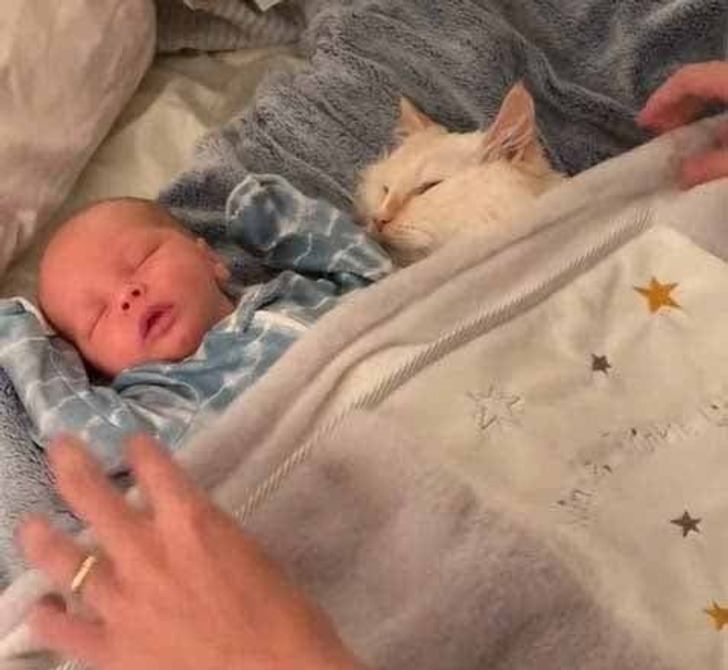
From the moment William entered the household, Teddy, the family cat, embraced him with open paws, assuming the role of a caring and watchful «big brother.» Contrary to expectations, Teddy didn’t display an ounce of jealousy but instead showered the newborn with affection and protection, much to the delight and surprise of his owners.
Capturing these precious moments on camera, William’s parents shared their growing friendship on TikTok, where it quickly gained attention from viewers worldwide. In the videos, Teddy is seen gently interacting with William, ensuring his safety and even playfully engaging with him in his baby seat. It’s evident that Teddy sees William as his own, forming an inseparable bond that transcends species.
One video went viral.
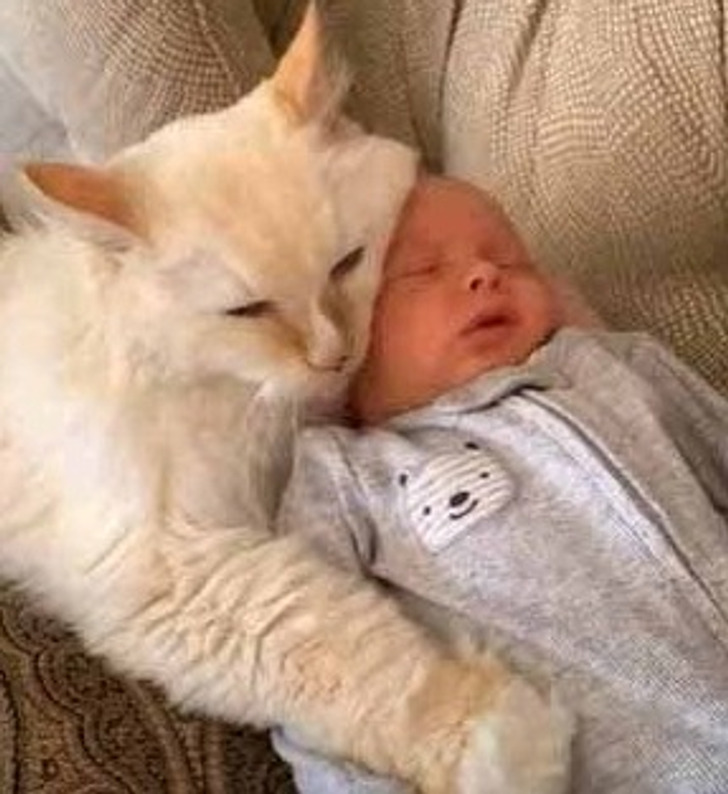
William and Teddy’s TikTok videos are a massive hit, with one in particular reaching almost 12 million views. Witnessing the cat’s tender and affectionate behavior towards the baby brings joy to all who watch their interactions. Whether it’s sleeping next to him, keeping watch over his dreams, or delicately holding him with his paws, the cat’s unwavering commitment to the baby is evident. Refusing to leave his side, the cat seems to intuitively understand the fragility and vulnerability of the little one, embodying a protective presence that touches the hearts of all who witness their bond.
Happy comments flooded in.
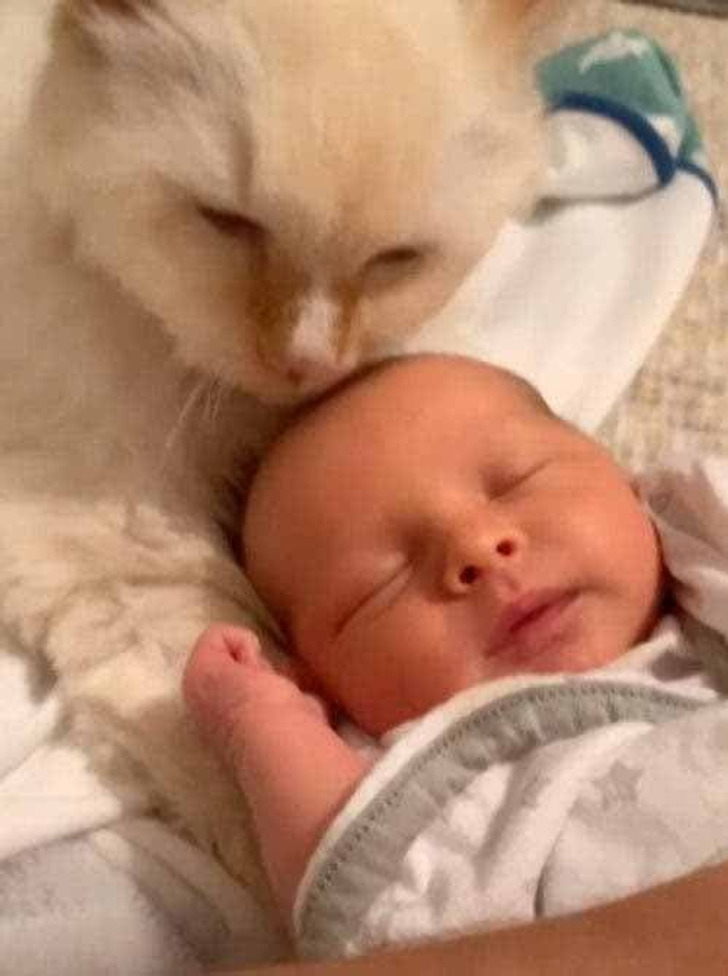
The touching videos shared by William’s parents evoke a range of emotions from viewers, with many expressing admiration for Teddy’s unwavering devotion to his baby brother. Comments flooding the videos reflect the universal appeal of their bond, with some jokingly suggesting that William may have become Teddy’s surrogate. «Could anything be more precious?» one user mentioned. Indeed, Teddy’s nurturing instincts and affectionate behavior have earned him the title of a first-rate babysitter in the eyes of his adoring fans.
While others worried about the cat and baby close together.
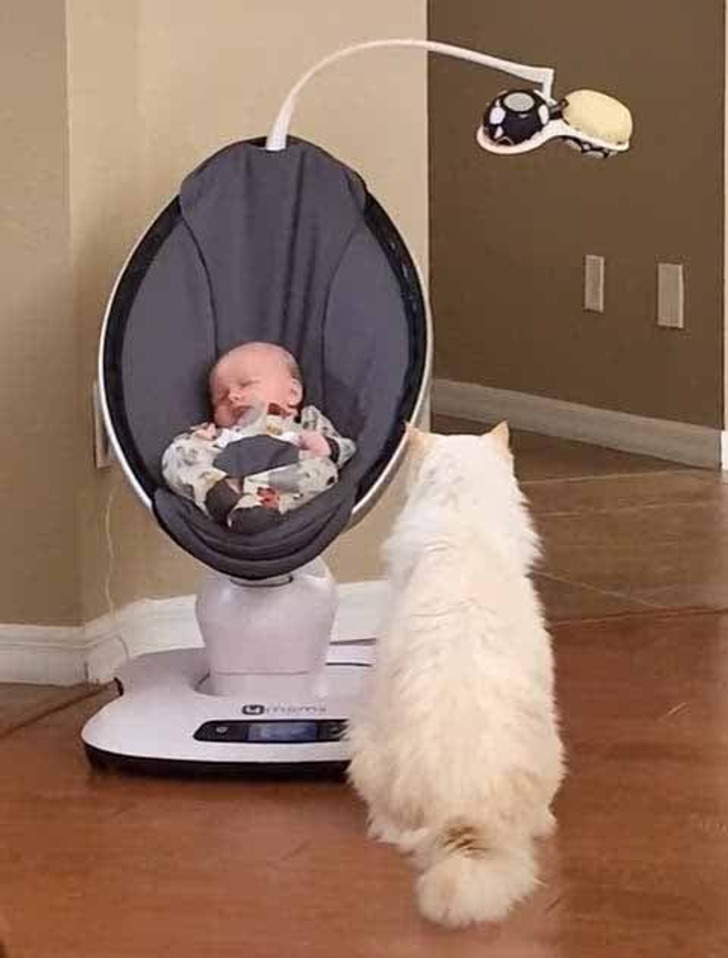
Some people expressed concerns about allowing pets near newborns. In one of the videos, we can see comments saying «Please be careful.» Allowing cats near babies is a matter of personal choice and depends on various factors, including the temperament of the cat, the health and safety concerns of the baby, and the supervision provided by the parents or caregivers.
While many cats can coexist peacefully with newborns and even develop strong bonds with them, it’s essential to exercise caution and take appropriate precautions to ensure the safety of both the baby and the cat. However, Teddy and William’s interactions challenge preconceived notions about cats’ personalities and showcase the depth of empathy and compassion these creatures are capable of displaying.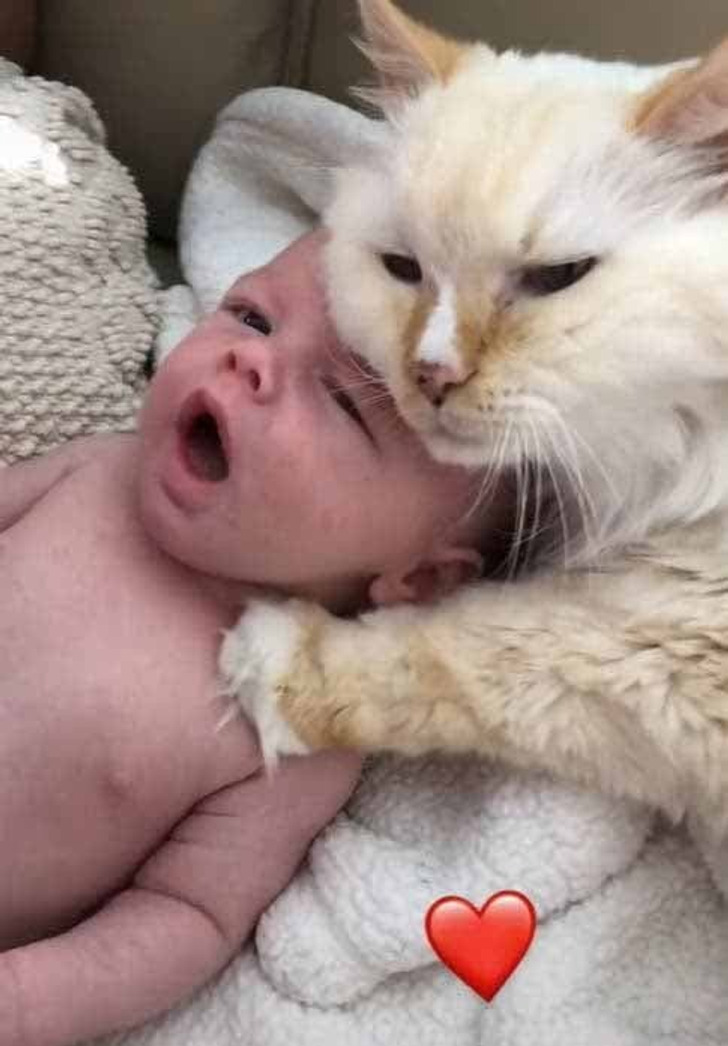
As Teddy continues to watch over William, offering comfort and companionship in his own feline way, their story serves as a heartening reminder of the transformative power of love, transcending boundaries of species and age. In a world often divided by differences, the pure and unconditional bond between a cat and a baby provides hope and warmth, reminding us of the inherent goodness that exists within us all.
Richard Gere’s 24-Year-Old Son Caused a Sensation on the Red Carpet, and People Say He’s More Handsome Than His Father
Richard Gere is one of those actors who loves to keep his personal life private. However, he recently made a spectacular appearance on the red carpet. The 74-year-old actor appeared with his 41-year-old wife and 24-year-old son, Homer. The young man immediately attracted everyone’s attention.

The father-son duo looked exceptionally dapper in their elegant black suits, complemented by matching bow ties and crisp white dress shirts. Radiating charm, they delighted cameras with their warm smiles and shared a heartfelt embrace.

Fans online were surprised by how handsome Homer looked. One person gushed, saying, “Wow, his son is so good-looking!” Another described him as a “Beautiful guy!” A third person observed, “His son is more handsome than Dad […]”

Homer was born in February 2000, and he shared his name with his grandfather, Richard Gere’s dad, who passed away in 2023 at 100 years old. His mother is Gere’s second ex-wife, model and actress Carey Lowell.
Homer Gere attended Hackley School in Tarrytown, New York, and later graduated from Brown University in May 2024 with a Bachelor of Arts in psychology and visual art, as per his LinkedIn profile. Since September 2022, he has been working as a research assistant in the therapeutic neuroscience lab at an Ivy League School of Public Health.
In a March 2024 interview with Vanity Fair Spain, Richard Gere mentioned that Homer Gere struggles to comprehend his father’s fame. Richard said, “It’s hard for him to see me on screen because, even when I play extreme characters, I’m still his father, making it hard for him to get into the story.”
Richard also revealed that Homer is beginning to follow in his footsteps by exploring his acting and musical talents. “He has just started acting and seems to enjoy it,” Richard noted. “He’s been writing and directing small films, giving us a new shared interest.”
Moreover, Richard emphasized the importance of his children learning to play an instrument. Homer initially chose the piano as a child but eventually quit. He then switched to drums, which he also didn’t stick with for long. However, a few years ago, he began playing in his own band in college and is now a vocalist in a punk band.
Another celebrity child who attracts a lot of attention is Angelina Jolie and Brad Pitt’s daughter, Shiloh. She has taken social media by storm with her dancing.



Leave a Reply